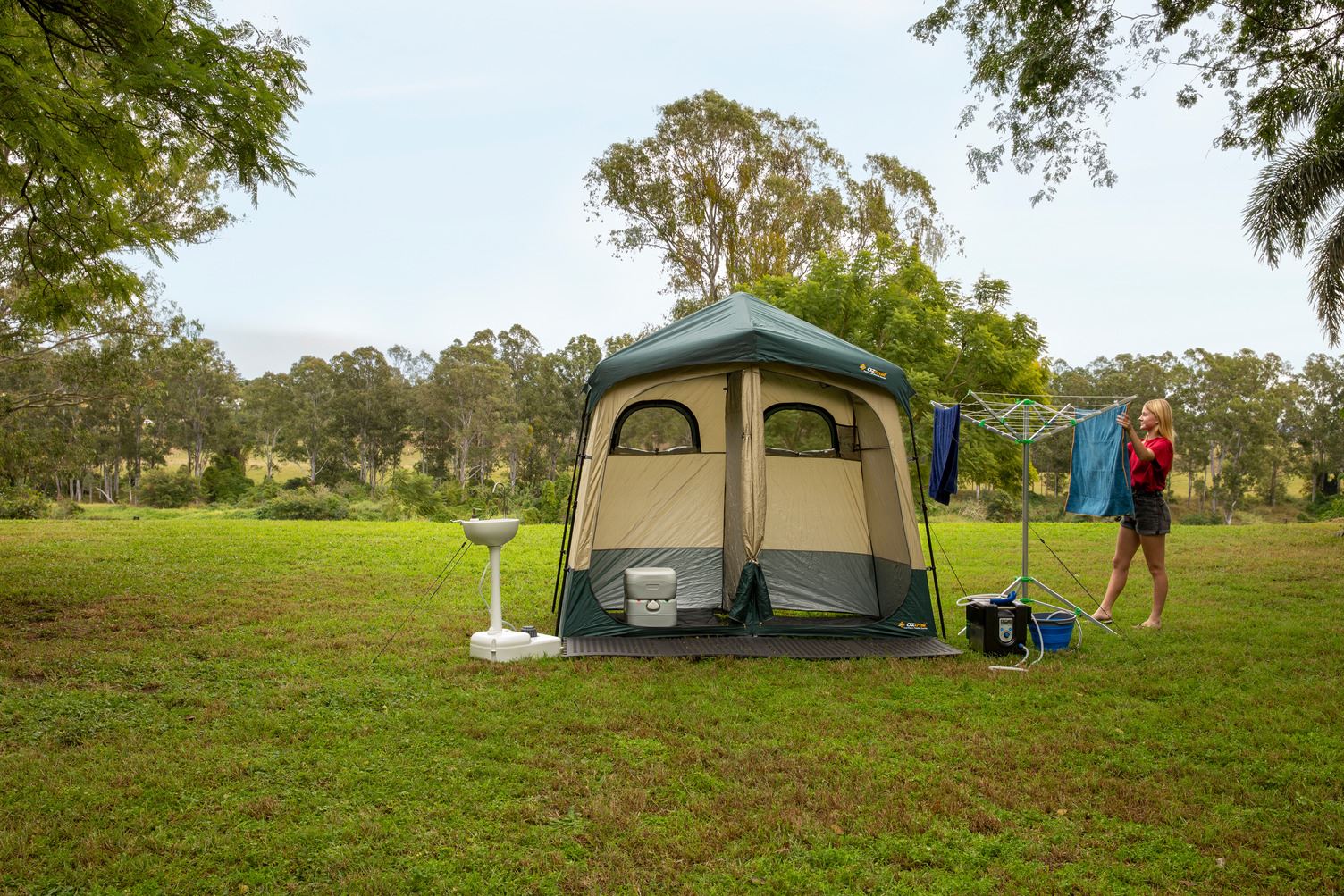
Camping isn't all it's cracked up to be. It's not just about toasting smores and exchanging stories around a campfire under a clear starry sky. Then there's the grunt work. Cleaning the mud out of the tent, drying wet garments, and, of course, getting rid of your human waste. Mother nature does call a few times a day, and she prefers that you dispose of your trash in a manner that does not harm her once you've responded to her call.
Portable camping toilets:
So, let's get down to business and figure out how we get rid of our human waste when camping. When you're out in the backwoods, some of you may opt for the traditional technique. With a shovel in hand, you dig a little hole behind a tree and hide, hoping no one notices you going about your business. Because of the trees, this strategy works best in forest camping areas. However, in recent years some places in Australia have made it law that you must bring a portable camping toilet with you as tourism has affected the natural habitat so much. Investing in a portable camping toilet so that you can do your business in a way similar to how you would at home is the best move. Once you've figured out how to use a portable camping toilet, you'll be able to poop with a view. What is a portable camping toilet, exactly? Portable camping toilets are available in a variety of designs and sizes. When selecting a camping toilet, keep in mind the weight, storage capacity, and waste disposal options. Portable camping toilets are divided into three categories.
A bucket:
This is the most basic portable toilet, and it consists of just what it says — a bucket. But not just any bucket, there are plenty of more comfortable options than this, the Companion toilet stool that uses disposal bags as well. To use one of these, simply place a plastic bag inside and line it up like a garbage can. This means you don't have to deep clean the buckt every time you go to empty it, and you don't have to wear a hazmat suit to do it. The lack of comfort is one of the bucket toilet's drawbacks. You can get a separate removable toilet seat so you don't have to practise squats before your vacation. Another downside of the bucket toilet is that it cannot distinguish between solid and liquid waste, so it's recommended to use it only for number twos unless you want a liquid-filled bag that could rupture at any time. Furthermore, because the bucket lacks an odor-removal capacity, you'll need to empty it frequently if you can't stand the stench. Although it isn't the greatest portable camping toilet, the bucket has the advantage of being a low-cost choice, making it ideal for budget or infrequent campers. Furthermore, it is lightweight and simple to carry and set up, allowing you to save space in your car when driving to your campsite.
Composting toilets:
Because compost toilets have a flush, they are comparable to normal toilets and might be among the best portable camping toilets. The pedestal sits higher than a bucket toilet, so your thighs aren't put under as much strain. Many of them also include a toilet seat, ensuring that they are far more comfortable than a bucket toilet. Some types include toilet paper holders, so you won't have to worry about forgetting when leaving your tent in the middle of the night.
They frequently contain odor-eliminating components, and your waste is flushed away, ensuring that you are not confronted with the waste of others when you go to do your thing. These toilets have the problem of being big, which means they take up a lot of space in your car. If your campsite is a significant way from where you left your car, this can be an issue. Decompose toilets bind the waste together with ingredients like ash and sawdust, allowing it to compost.
Chemical toilets:
The portable chemical toilet resembles a compost toilet in appearance however these camping toilets are much easier to handle and empty. The majority of chemical toilets have the same functions as compost toilets, with the exception that chemical toilets contain compounds that eliminate odour. These portable camping toilets are similar to the porta-potty toilets that you'll see at festivals and large public gatherings. Chemical toilets are less environmentally friendly, and the waste they gather must be disposed of properly. When purchasing a portable camping toilet, there are a few things to keep in mind.
Trash disposal: Perhaps most importantly, and the ultimate goal of this essay, is to discuss how waste is disposed of. In most chemical toilets, ingredients transform your pee into a solid. This is practical because it makes the garbage much lighter and reduces the risk of spilling it. Because the trash has been chemically toughened and cemented together, it is easier to clean once you have emptied it.
The tank capacity: When deciding which toilet to buy, think about how long your camping trips are and how many people you usually bring. If you frequently travel with a large party, it's a good idea to invest in a portable camping toilet with a larger capacity so you don't have to empty it every day. If you frequently go on short trips with only one or two more people, a smaller restroom is likely to be adequate.
The toilet's dimensions: The portable camping toilet's dimensions are also an important factor to consider. If you're an RV camper, you'll want to pay special attention to the measurements of the RV toilet, as they must fit into your camper van. If you want it to be a more comfortable experience, make sure it's the right height. It's also worth looking to see if it has a solid foundation. One of the major disadvantages of doing your business outside is that the ground is not always flat or solid, which could result in the toilet tumbling over while you're using it! If you need to transport the toilet over a long distance, make sure it is not too heavy or cumbersome.
Privacy: You might prefer a little privacy and quiet when it comes to emptying our bowels. Perhaps there are other campers nearby, or there isn't a wooded area to provide you with some privacy from your companions. Nobody wants to be the brunt of all the campfire jokes later on! If you're willing to invest a little more money, you can get a ensuite tent and create your own portable bathroom!
How to dispose of camp toilet waste:
So, you've been elected by your camping pals to dispose of your collective trash; now, let's see how you can do it with the least amount of exposure to it while maintaining your dignity. We should all aim to be responsible campers and properly dispose of our trash and human waste in order to conserve the natural areas we enjoy as well as respect our fellow campers. While human waste decomposes over time, it also includes chemicals that can harm other campers and the environment. If you simply dump it on the ground, it will be hazardous for a period of time, emitting a foul odour, and an unlucky fellow camper may trip on it. Follow these procedures of your specific campground to ensure you're a responsible camper. There are plenty of dumpsites you can choose from, simply ask the information desk if it's a national park or find one on Wikimaps.
Most campgrounds should have a designated location where you may empty and clean your toilets. These are usually quiet locations a short distance from the campsite. After you've set up your tent, take a quick walk around the campground to make sure you can find it when you need it. It's best to wait until you've removed the cassette or waste tank before doing this because no one wants to be hunting for a disposal place while carrying a large tub of faeces. Create a stable path between the permitted disposal place and your tent to avoid slipping or becoming trapped while transporting your waste tank, which is the last thing you want to happen. Emptying your portable camping toilet early in the morning or soon before dusk is also a good idea. You shouldn't have to wait in line to empty and clean your portable camping toilet during these hours because it should be quieter.
Two tanks are included in the majority of portable camping toilets. A waste holding tank and a freshwater tank. It is preferable to use a two-tanked toilet because it is the easiest to empty. To begin, remove the catch that connects the water tank and holding tank. When working with hazardous materials, it's best to wear disposable gloves to reduce the danger of picking up bacteria. Because the tanks are designed to be emptied when you're in the backcountry, they're usually light, but you may have to go a long distance with them. If that's the case, the best alternative might be to empty the tank more frequently.
Take your tank slowly and carefully to the authorised disposal spot to avoid any disasters. Disposal areas can differ in size and shape. Some feature open grids where you may pour your trash, while others are designed to look like a trash can with a lid. Remove the cap off the top of your waste holding tank's spout and keep it in place while you prepare to empty it. A revolving spout is included with some waste tanks. The revolving spout directs the waste away from your hands and standing position, reducing the chance of splashing. If your waste tank does not have a spout, take an additional step back to avoid being sprayed. Pour the waste onto the grid or into the disposal tank until it has subsided.
Cleaning your septic tank:
There should be a faucet or hose at the trash disposal facility to empty your tank. Fill the tank with fresh water, replace the top, and shake it a little to get any parts that have adhered to the side out. Empty the water back into the disposal area and continue the procedure until the water runs clear. If you're still on your camping trip, add a little freshwater to the toilet and mix in the disinfection toilet chemicals to make it ready to use. If you're cleaning up at the end of your trip, skip this step. Return the waste holding tank to your portable toilet and replace it in the same manner as before. If your water tank needs to be replenished, now is the time to do so by taking it over to the tank or hose. To guarantee you haven't picked up any hazardous bacteria, dispose of your gloves and carefully wash your hands.


.png)
Leave a comment